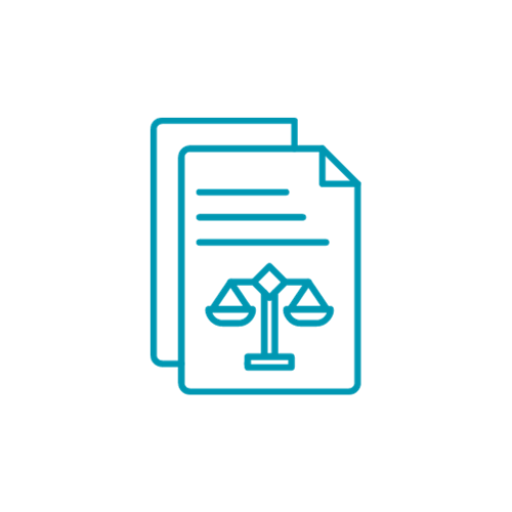GDPR Compliance-GDPR compliance advice tool.
AI-powered GDPR compliance made simple.
Your GDPR guide
Explain GDPR consent.
Am I a data controller?
Rights under GDPR?
GDPR compliance steps?
Related Tools

Legal+
Your personal AI lawyer. Does it all from providing real time legal advice for day-to-day problems, produce legal contract templates & much more!

Adzviser: Marketing & Ads Data Analytics
Discover and optimize your marketing campaigns with real-time data from Google Ads, Facebook Ads, Instagram Insights, Google Analytics, Bing Ads, TikTok Ads, Pinterest Ads, Snapchat Ads and LinkedIn Ads.

UK Law
A GPT specializing in UK law, providing accurate, reliable legal information.

CSRD Chat
Provides updated guidance on ESRS, with improved document navigation for concise answers

Ecommerce GPT
Shopify expert providing detailed guidance and troubleshooting.

LegalGPT - Especialista em Contratos BR
Especializado em direito contratual brasileiro, projetado para fornecer orientações e informações sobre contratos e legislação pertinente no Brasil. Ele oferece assistência a advogados, estudantes de direito, e profissionais que necessitam de apoio jurídi
20.0 / 5 (200 votes)
Introduction to GDPR Compliance
The General Data Protection Regulation (GDPR) is a legal framework established by the European Union (EU) to govern how personal data is collected, processed, and stored by organizations. The regulation aims to protect the rights and freedoms of individuals regarding their personal data, ensuring it is handled lawfully, fairly, and transparently. GDPR compliance involves implementing the necessary technical and organizational measures to secure data, minimizing the data collected to what is strictly necessary, and respecting data subject rights such as access, rectification, and erasure. For example, a retail company collecting customer data for marketing must ensure explicit consent is obtained and stored securely. Failure to comply can result in heavy fines, up to 4% of annual global turnover or €20 million, whichever is higher.

Core Functions of GDPR Compliance
Data Protection by Design and Default
Example
An e-commerce platform integrating privacy settings during the development phase of a new feature, such as encrypting user data by default.
Scenario
A software development company implements data minimization and anonymization techniques in a CRM system during its design, ensuring that personal data is processed only when necessary and with appropriate safeguards.
Data Subject Rights Management
Example
A healthcare provider enables patients to easily access, correct, or request the deletion of their personal data through a self-service portal.
Scenario
A patient requests the deletion of their health records from an online clinic. The clinic verifies the identity, assesses whether there are legal grounds to retain the data, and if not, proceeds to erase the information within the stipulated time.
Data Breach Notifications
Example
A financial institution experiences a data breach affecting customer information. It promptly reports the incident to the relevant supervisory authority within 72 hours and communicates with affected individuals.
Scenario
A bank's customer database is compromised. Under GDPR, the bank informs both the data protection authority and its customers about the breach, detailing the risks and measures taken to prevent further damage.
Target Users of GDPR Compliance Services
Small and Medium Enterprises (SMEs)
SMEs often lack the in-house expertise or resources to navigate GDPR requirements. By using GDPR compliance services, these businesses can ensure that their data processing activities align with legal requirements, reducing the risk of fines. For instance, a small marketing agency might benefit from automated tools that track consent and provide guidance on data handling practices.
Data-Intensive Organizations
Companies that process large volumes of personal data, such as tech firms, healthcare providers, and financial institutions, have more significant compliance obligations under GDPR. These organizations need robust mechanisms for managing data subject rights, conducting data protection impact assessments (DPIAs), and ensuring that third-party processors are compliant. For example, a multinational cloud provider would require extensive tools to manage cross-border data transfers while adhering to GDPR's strict requirements.

How to Use GDPR Compliance
Visit aichatonline.org for a free trial without login, also no need for ChatGPT Plus.
Begin by accessing the tool at the specified URL, where you can explore its features without any account requirements or subscription costs.
Understand GDPR principles.
Familiarize yourself with the fundamental principles and rights under the GDPR, including data subject rights and the responsibilities of data controllers and processors.
Input specific queries.
Utilize the tool by inputting detailed questions about GDPR compliance, such as understanding specific articles, obtaining advice on processing activities, or generating GDPR-related documents.
Apply guidance to real-world scenarios.
Use the responses provided to apply GDPR guidelines to your specific context, whether it’s for legal compliance, data management, or privacy policy development.
Leverage advanced features.
Explore additional functionalities such as generating compliance checklists, automating GDPR document creation, and analyzing data processing risks, ensuring full GDPR adherence.
Try other advanced and practical GPTs
Excel Data Insight
AI-powered insights for your Excel data.

Japanese Language Learning Helper & Tutor
AI-powered Japanese language learning assistant.

Ultimate Album Cover Generator
AI-Driven Custom Album Cover Creations

Critical Thinker
AI-driven insights for better decisions.

Amelia: Cybersecurity Analyst
AI-powered Cybersecurity Expertise at Your Fingertips

Whimsical Diagrams
Visualize your ideas with AI-powered precision.
논문 읽기 도우미
AI-powered academic paper assistant.

EconomicsGPT
Empowering Your Economics Knowledge with AI.

O Arquiteto do Conhecimento
Empowering Minds with AI-Driven Learning

🏛️ GPT Architect (Advanced Model)
Tailor Your GPTs with AI Precision

CodeFarm v8.4
AI-powered code excellence and efficiency.

Excel Formula AI Generator & Data Analyst
AI-Powered Excel Formula & Data Insights

- Risk Assessment
- Legal Advice
- Data Security
- Policy Drafting
- Compliance Automation
Common Questions About GDPR Compliance
How does GDPR Compliance help with understanding data subject rights?
GDPR Compliance provides detailed explanations of data subject rights, such as the right to access, rectification, and erasure, and offers practical guidance on how to implement these rights within an organization.
Can GDPR Compliance assist in drafting GDPR-compliant documents?
Yes, the tool can generate templates and documents such as privacy policies, data processing agreements, and consent forms that are fully compliant with GDPR requirements.
What kind of queries can I input into GDPR Compliance?
You can ask about specific GDPR articles, seek advice on data processing activities, request explanations of legal terms, or inquire about compliance strategies for your business.
How does GDPR Compliance address cross-border data transfers?
The tool provides detailed information on the requirements for cross-border data transfers under GDPR, including the use of Standard Contractual Clauses and Binding Corporate Rules.
Is GDPR Compliance suitable for small businesses?
Yes, the tool is designed to cater to organizations of all sizes, offering scalable solutions that address the unique challenges faced by small and medium-sized enterprises in achieving GDPR compliance.